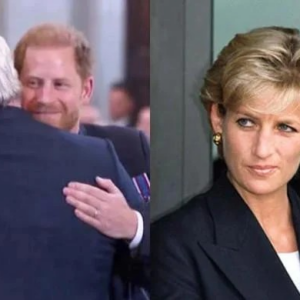In a recent interview on Greg Gutfeld’s show, Donald Trump made several perplexing claims about his debate performance and interactions with the media, leaving many observers stunned and questioning the accuracy of his recollections. This episode, along with the subsequent media reactions, underscores Trump’s frequent misstatements and the growing disconnect between his perception of events and reality.

During the interview, Trump asserted that during one of his presidential debates, the audience “went crazy” in his favor while the moderators corrected him multiple times. He contrasted this treatment with that of Vice President Kamala Harris, whom he claimed was not corrected once. Trump’s recollection, however, was immediately met with skepticism for a simple reason: there was no audience at the debate. This fact is well-known, as the debate was held without a live audience due to pandemic restrictions. Nevertheless, Trump confidently described an audience response that never existed, raising eyebrows and eliciting bemused reactions from both the media and the public.
One of the most telling moments of the interview was when Trump appeared to realize mid-sentence that his claim might not align with reality. His face momentarily suggested self-doubt, as if he was aware of the falsehood yet continued with his narrative. This incident exemplifies a recurring theme in Trump’s rhetoric: the blurring of fact and fiction, where his personal version of events becomes his truth, regardless of verifiable reality.
Media personalities were quick to respond to this bizarre moment. “Morning Joe” on MSNBC aired a segment ridiculing Trump’s claim. Hosts sarcastically wondered whether Trump was confusing the debate with a concert or another event entirely, as no audience reaction existed. They humorously speculated that Trump might have envisioned the cheers in his head, creating a narrative that satisfied his ego, even if it had no basis in fact. The internet, unsurprisingly, followed suit, with Twitter users mocking Trump’s hallucination-like statements and highlighting the growing absurdity of his public assertions.
The Fox News audience during the Gutfeld show was notably silent during this part of the interview, further emphasizing the awkwardness of Trump’s claims. Typically, audience members react vocally during such segments, but in this instance, they were quiet—perhaps puzzled by the contradiction between what they had seen during the actual debate and what Trump was describing.
This episode is not an isolated incident but rather part of a broader pattern in Trump’s communication style. He often repeats claims that are easily disproven, yet he presents them with conviction, leading some of his supporters to question their own memories or understanding of events. This tactic, whether deliberate or not, has led many to question Trump’s grasp of reality and his ability to differentiate between fact and fiction.
The interview also highlighted another familiar aspect of Trump’s persona: his self-aggrandizement. Trump referred to himself as “the GOAT” (Greatest of All Time) in debates, a title that he has claimed multiple times despite mounting evidence to the contrary. Such self-praise is unusual among public figures, as most prefer to let others bestow such accolades. For Trump, however, declaring his own greatness seems to be a central part of his strategy, even when it borders on the absurd.
As if the debate remarks weren’t enough, Trump also touched on other topics, from New York’s future to crime and mental health, often repeating his familiar rhetoric about criminals being released from prisons and mental institutions. His fixation on these talking points, combined with his tendency to repeat them ad nauseam, suggests a communication strategy rooted in repetition, even if the facts don’t support his claims. This has been a long-standing tactic of Trump’s, as confirmed by former staffers who have shared that he believes in the power of repeating statements until they are accepted as truth.
Ultimately, this interview paints a picture of a man struggling to maintain control over his public image while his grasp on reality seems increasingly tenuous. Trump’s statements about his debate performance, the imaginary crowd, and his inflated sense of self-importance illustrate the challenges of taking his words at face value. For those who have long followed his career, this is not new, but for the casual observer, it serves as a reminder of the complexities and contradictions that define Donald Trump’s public persona. As the media continues to dissect and respond to his interviews, it’s clear that Trump’s narrative-building, often detached from reality, will remain a topic of discussion and satire for some time to come.





